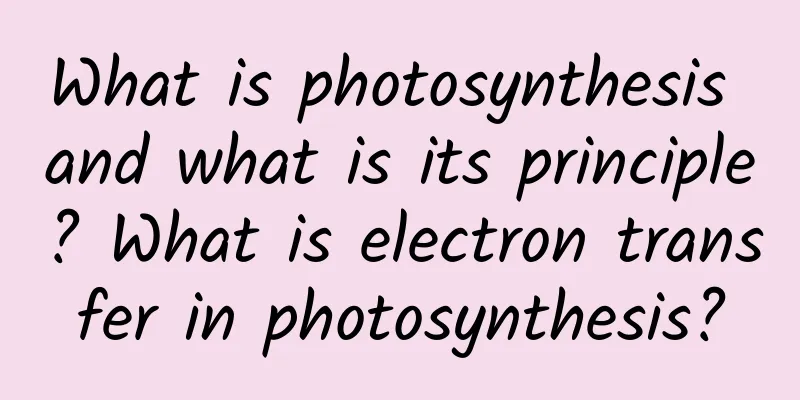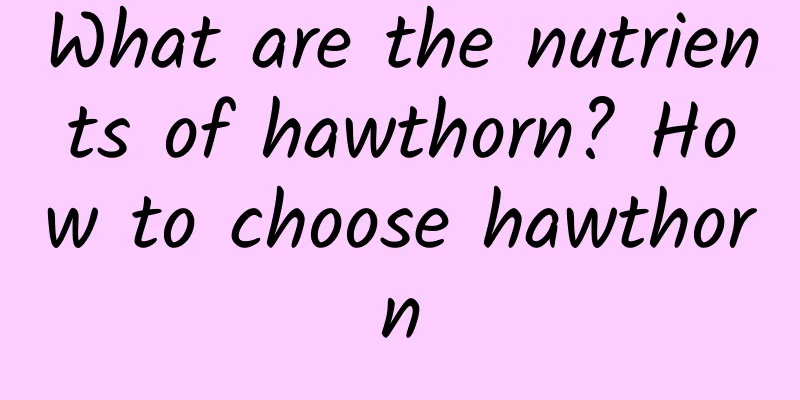What is photosynthesis and what is its principle? What is electron transfer in photosynthesis?

|
For green plants, during sunny days, the leaves of green plants will use the energy of sunlight to carry out photosynthesis. Green plants use the sun's light energy to assimilate carbon dioxide and water to produce organic matter and release oxygen. The organic matter produced by photosynthesis is mainly carbohydrates, and it releases energy. Isn't it amazing? Let's take a look at the principle of how they do this? Are you interested? Contents of this article 1. What is photosynthesis and what is its principle 2. What is electron transfer in photosynthesis? 3. How do leaves carry out photosynthesis? 1What is photosynthesis and what is its principlePhotosynthesis is the process by which producers such as plants, algae and some bacteria use light energy to convert carbon dioxide, water or hydrogen sulfide into carbohydrates. Principle of photosynthesis: Green plants use the sun's light energy to assimilate carbon dioxide and water to produce organic matter and release oxygen. The organic matter produced by photosynthesis is mainly carbohydrates, which release energy. The process of photosynthesis: Light reaction: When light shines on the pigment molecules of plants, its energy is absorbed and converted into the difference in hydrogen ion concentration inside and outside the chloroplast membrane, which then acts on ATP synthase, leading to the synthesis of ATP. Dark reaction: Plants absorb carbon dioxide and combine it with sugar. With the participation of enzymes, it reacts with water to generate reduced sugar (carbon chain growth) and oxygen. This process consumes ATP, which is a dark reaction. Then, after a cycle, sugars for combining with carbon dioxide can be regenerated. During the cycle, the carbon in carbon dioxide is converted into carbon in sugars, achieving carbon fixation. After a cycle, the amount of sugar increases. 2What is electron transfer in photosynthesis?Most of the energy released in glucose metabolism is accomplished by the electron transfer system or electron transfer chain including molecular oxygen. The electron transfer chain is a series of electron transfer bodies present on the inner membrane of mitochondria, such as various cytochromes, etc. Molecular oxygen is the last electron acceptor in the electron transfer chain. In the electron transfer chain, the redox reactions of each electron transfer body are sequentially transmitted from high energy level to low energy level. The energy released during the transfer process is stored in ATP through phosphorylation. The formation of ATP occurs on the inner membrane of mitochondria. Oxidative phosphorylation: Phosphorylation is closely related to the electron transfer of the oxidation process. It is different from substrate-level phosphorylation. 3How do leaves photosynthesize?For green plants, during sunny days, their leaves will use the energy of sunlight to carry out photosynthesis to obtain the nutrients necessary for growth and development. The key participants in this process are the chloroplasts inside. Under the action of sunlight, the chloroplasts convert the carbon dioxide that enters the leaves through the stomata and the water absorbed by the roots into starch, while releasing oxygen. |
Recommend
What to do if you are obese and infertile
Obesity infertility is a disease that means a per...
What are the symptoms of neurasthenia in women?
I don’t know how much you know about the symptoms...
Why are vascular diseases increasingly affecting young people?
《Cotton Swab Medical Science Popularization》 Xu S...
How long does postpartum sweating last?
In China, there is a traditional custom of confin...
Excessive worry about pregnancy and delayed menstruation
Many people will be very worried about pregnancy ...
What should I pay attention to after getting the ring?
If you want to completely prevent pregnancy, IUD ...
What are the chest muscle exercises for women?
If you take a look around the gym, you’ll notice ...
Is it normal to have two breasts of different sizes?
Ladies should pay special attention to their own ...
What to do if pregnant women have eczema on their stomachs
Because of pregnancy, pregnant women are very dif...
How many days of bleeding is normal after medication?
Medical abortion is a common method of artificial...
Efficiently crossing the blood-brain barrier? A breakthrough is coming for incurable brain diseases
Author: Xu Sijia, PhD, Kyoto University School of...
Will cataracts cause itching and pain? What will happen when cataracts develop?
Cataract is an eye disease and the leading cause ...
There are four benefits for women to touch their breasts frequently
1. Early detection of lumps and lesions Many wome...
Diagnosis and treatment of pregnancy induced hypertension
Giving birth to a child is the most painful thing...
Can royal jelly be applied on the face?
Honey is a very good food. People often use honey...









